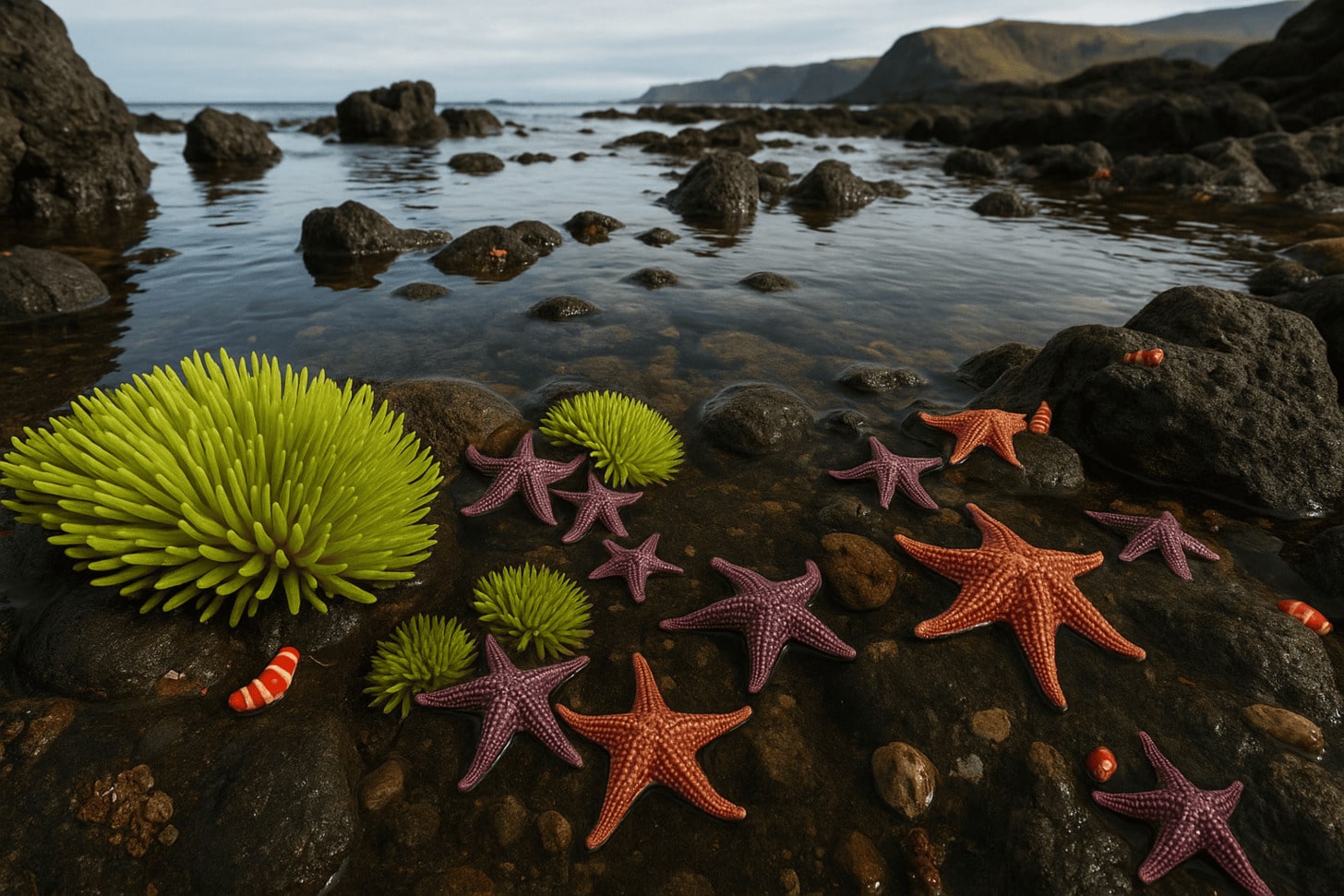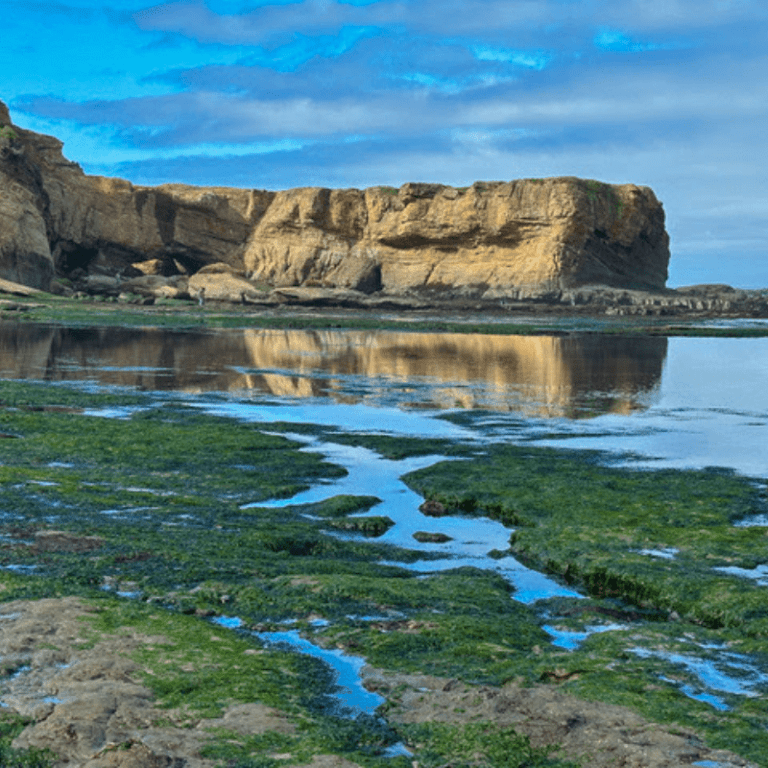Oregon Tide Pool Exploration: What are Tide Pools?
This post may contain affiliate links. I may earn a small commission at no extra cost to you.
The Ecological Significance of Oregon Tide Pools
Tide pools represent one of nature's most remarkable adaptations. These microhabitats exist in the intertidal zone—the area between high and low tide marks—where marine organisms have evolved to withstand dramatic shifts in temperature, salinity, and water coverage. During low tide, these resilient creatures become visible in rocky depressions filled with seawater.
Oregon's tide pools are particularly special due to the state's diverse coastal geology. The volcanic basalt formations of the central coast, sandstone platforms of Cape Kiwanda, and the iconic sea stacks at Cannon Beach create varied habitats supporting different communities of intertidal life. These ecosystems serve as nurseries for many marine species and form critical links in the coastal food web.
As visitors, we have a responsibility to approach these fragile environments with knowledge and respect. The organisms living here have adapted to survive crashing waves and exposure to air, but they remain vulnerable to human impact. By understanding proper tide pool etiquette, we can enjoy these natural wonders while helping preserve their ecological integrity.
Plan Your Tide Pool Adventure
Before heading out, check the latest tide schedules to ensure you arrive during optimal viewing conditions. Low and minus tides provide the best opportunity to see diverse marine life.
Prime Locations for Oregon Tide Pool Exploration
Cape Kiwanda (Pacific City)

Cape Kiwanda offers a unique tide pooling experience with its distinctive golden sandstone formations. Unlike the basalt-dominated pools found elsewhere on the Oregon coast, Cape Kiwanda's tide pools form in sandstone depressions, creating a different habitat for marine life.
To find the best tide pools, head to the southern base of the cape where a rocky platform extends into the ocean. This area is accessible only during low tide and on calm days, as waves can sweep across the platform unexpectedly. The pools here are home to hermit crabs, sculpin fish, and colorful aggregating anemones that thrive in the protected pockets of water.
Safety Alert: Cape Kiwanda's sandstone platform can be dangerous during high surf conditions. Never turn your back to the ocean, and avoid exploring during stormy weather or high tide. The area is known for sneaker waves that can appear without warning.
Cannon Beach (Haystack Rock)
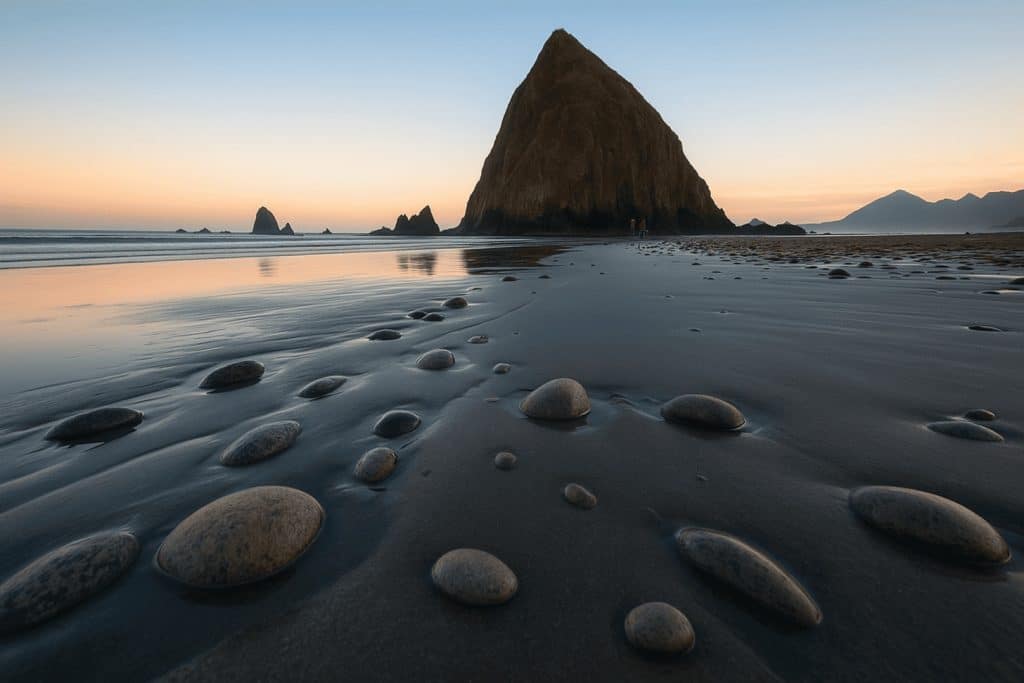
Perhaps the most iconic tide pooling destination on the Oregon coast, Haystack Rock rises 235 feet from the shoreline at Cannon Beach. During low tide, you can walk right up to this massive sea stack to explore the rich marine gardens at its base. The Marine Garden protected area surrounding Haystack Rock hosts an impressive diversity of intertidal life.
Here you'll find some of the coast's most vibrant tide pools, home to purple and orange sea stars, giant green anemones, and colorful nudibranchs (sea slugs). The area is also a nesting site for tufted puffins from April through July, adding birdwatching opportunities to your tide pool adventure.
Volunteer “beach rangers” are often present during summer months to help identify species and ensure visitors explore responsibly. Their knowledge enhances the experience while helping protect this beloved natural landmark.
Strawberry Hill (Yachats)
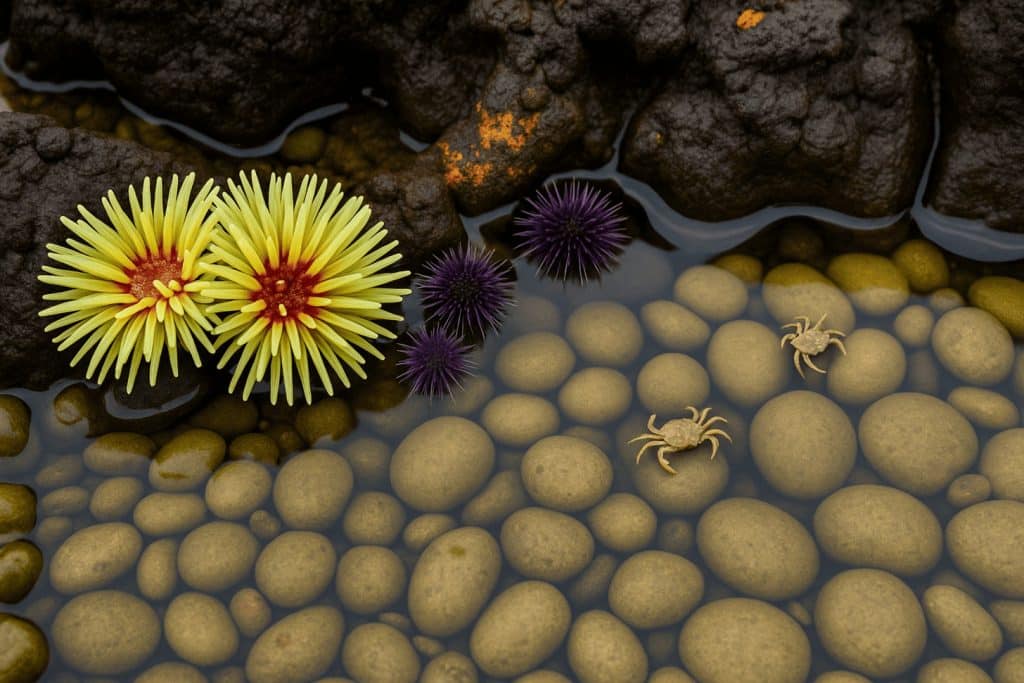
Located just south of Yachats, Strawberry Hill Wayside offers some of the most extensive tide pools on the central Oregon coast. The dramatic volcanic formations here create a labyrinth of pools, channels, and protected areas that support an incredible diversity of marine life.
What makes Strawberry Hill special is the abundance and size of its tide pools. Even during moderate low tides, you can find accessible pools teeming with life. The area is known for its particularly vibrant giant green anemones, which can grow to the size of dinner plates. You'll also find purple sea urchins, mossy chitons, and the occasional octopus hiding among the rocks.
The southern end of the beach features larger, deeper pools that remain submerged even during low tide, providing habitat for larger fish and more delicate creatures. Harbor seals often rest on the offshore rocks, adding to the wildlife viewing opportunities.
Enhance Your Tide Pool Experience
A quality waterproof field guide can help you identify the fascinating creatures you'll encounter during your exploration.
Species Identification Guide
One of the joys of tide pool exploration is identifying the diverse creatures that call these microhabitats home. Here's a guide to some common species you'll encounter during your Oregon tide pool adventures:
| Species | Appearance Tips | Best Spot |
| Ochre Sea Star | Purple, orange, or reddish with five arms. Rough texture. Size ranges from 2-10 inches across. | Cannon Beach (abundant around Haystack Rock) |
| Hermit Crab | Small crustaceans living in borrowed shells. Watch for movement as they scuttle across pool bottoms. | Cape Kiwanda (in protected sandstone pools) |
| Giant Green Anemone | Bright green tentacles surrounding a central mouth. When exposed to air, they retract tentacles and look like smooth green blobs. | Strawberry Hill (exceptionally large specimens) |
| Purple Sea Urchin | Spiny, globe-shaped animals with vibrant purple coloration. Often wedged into crevices. | Strawberry Hill (in deeper pools) |
| Aggregating Anemones | Smaller than giant green anemones, these form colonies with colors ranging from white to pink to green. | Cape Kiwanda (in clustered colonies) |
| Gooseneck Barnacles | Look like tiny dragon heads on flexible stalks. Often grow in clusters on wave-exposed rocks. | Cannon Beach (on exposed sides of rocks) |

Remember that marine life appearance can vary based on whether creatures are submerged or exposed to air. Many animals close up or change shape when the tide recedes as a defense mechanism against drying out. For the best viewing experience, observe pools that remain water-filled but are safely accessible during low tide.
Ethical Tide Pool Exploration Tips
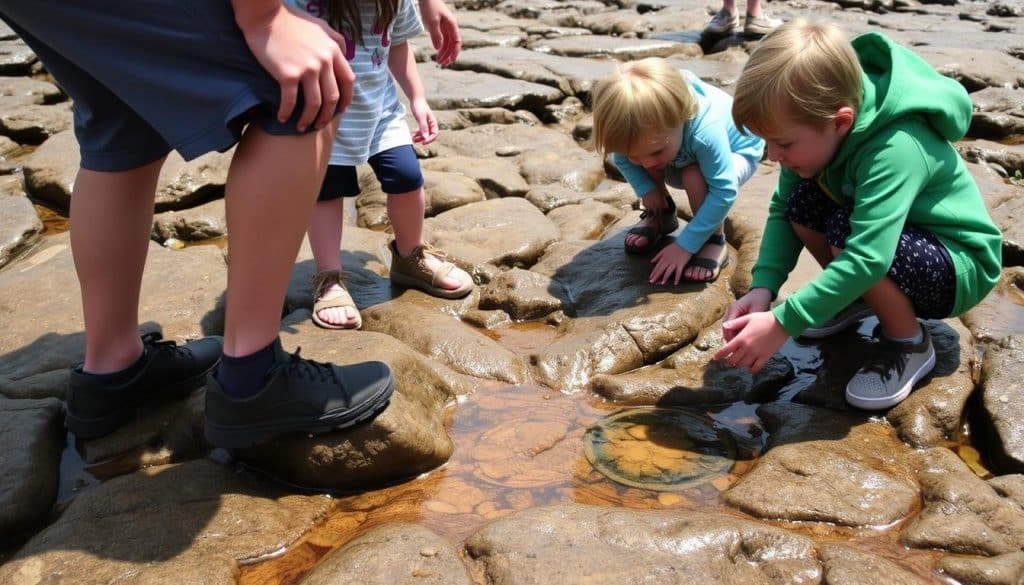
Tide pool ecosystems are remarkably resilient yet surprisingly fragile. The organisms that inhabit these areas have adapted to survive crashing waves and exposure to air, but they remain vulnerable to human impact. Following these guidelines ensures your exploration preserves these special places:
- Check tide schedules via NOAA's Tide Prediction Tool – Plan your visit for low or minus tides (negative numbers on tide charts) for the best viewing opportunities while ensuring you don't get stranded by rising waters.
- Walk only on bare rock – Step carefully on exposed rock surfaces rather than on marine life. What looks like an empty patch of rock might actually be covered with barnacles, algae, or other living organisms.
- Practice “look, don't touch” exploration – Observe without handling marine creatures. The oils and chemicals on human skin can damage their protective coatings, and even gentle handling can cause stress or injury.
- Leave everything as you found it – Resist the urge to collect shells, rocks, or other “souvenirs.” These items provide habitat for many creatures and contribute to the health of the ecosystem.
- Keep pets leashed and away from tide pools – Dogs can inadvertently damage fragile marine life by stepping on organisms or disturbing habitats.
- Never turn your back on the ocean – Sneaker waves can appear without warning, especially on the Oregon coast. Always maintain awareness of the water and have a clear path to higher ground.
“Take only photographs, leave only footprints, and make those footprints only on bare rock.”
Support Tide Pool Conservation
Join local conservation efforts to help protect Oregon's fragile tide pool ecosystems for future generations.
Essential Gear for Tide Pool Exploration
The right equipment enhances both your experience and safety while helping minimize your environmental impact. Here are our top recommendations for eco-conscious tide pool explorers:

Grippy Waterproof Footwear
Proper footwear is essential for navigating slippery rocks safely while protecting your feet and the marine environment.
Our Pick: KEEN Newport H2 Water Sandals
These sandals feature recycled materials in their construction and provide excellent traction on wet surfaces. The closed-toe design protects your feet from sharp rocks and barnacles.
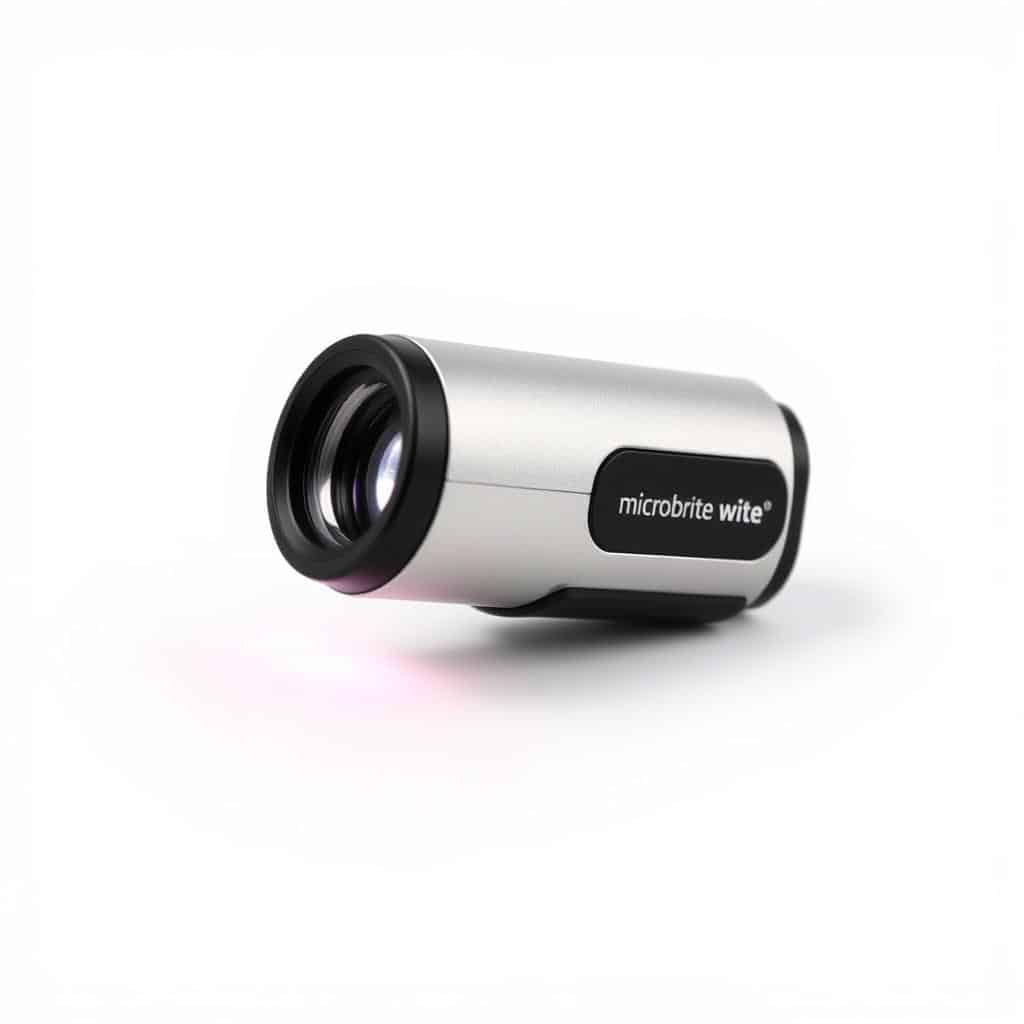
Magnifying Loupe
A quality magnifier reveals intricate details of tide pool inhabitants without disturbing them.
Our Pick: Carson MicroBrite Plus Pocket Microscope
This compact 60-120x magnifier includes LED illumination and allows you to observe tiny details of marine life from a respectful distance.

Reef-Safe Sunscreen
Conventional sunscreens contain chemicals harmful to marine life. Protect yourself and the environment with reef-safe alternatives.
Our Pick: Stream2Sea Biodegradable Sunscreen
This mineral-based sunscreen is tested and proven safe for marine ecosystems while providing effective SPF 30+ protection.
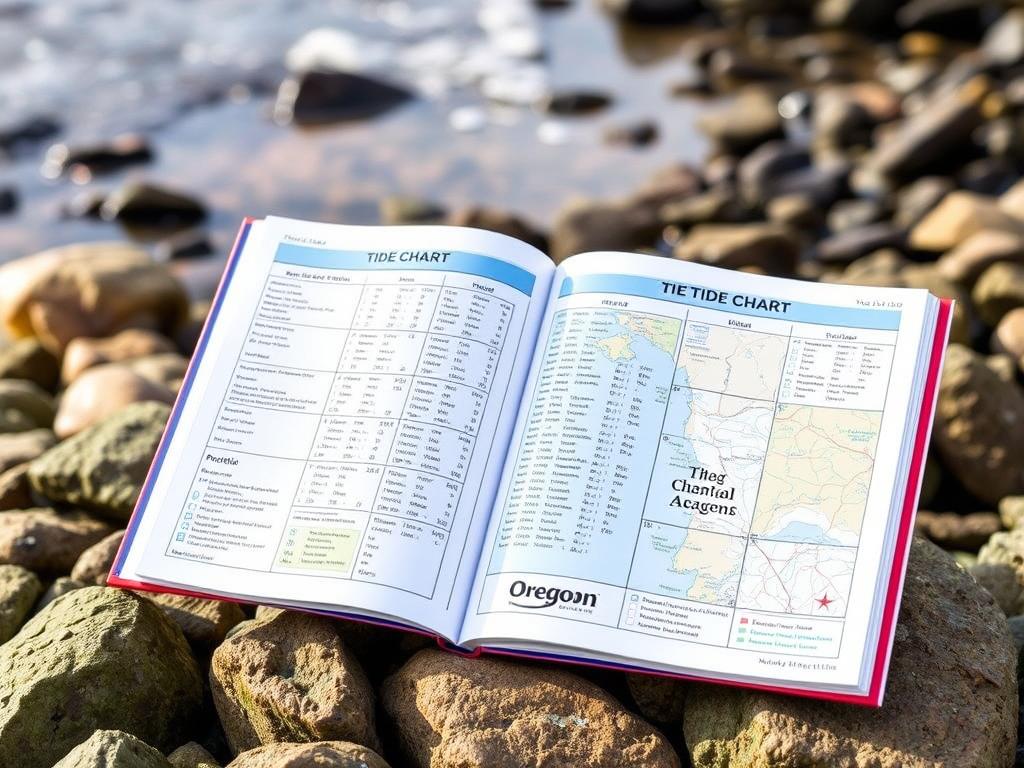
Waterproof Tide Chart Guide
While digital resources are helpful, a physical tide chart ensures you have critical information even without cell service.
Our Pick: Oregon Coast Tide Guide
This durable, waterproof guide includes tide predictions for the entire Oregon coast, plus species identification help and conservation tips.

Eco-Friendly Exploration Pack
Carry your essentials in gear that reflects your commitment to environmental stewardship.
Our Picks: SwissGear 1900 Scansmart TSA 17 Laptop Backpack, Black, 19-Inch
- Reusable water bottle (stainless steel)
- Backpack made from recycled materials
- Bamboo towel for drying hands
Understanding Tide Timing for Optimal Exploration
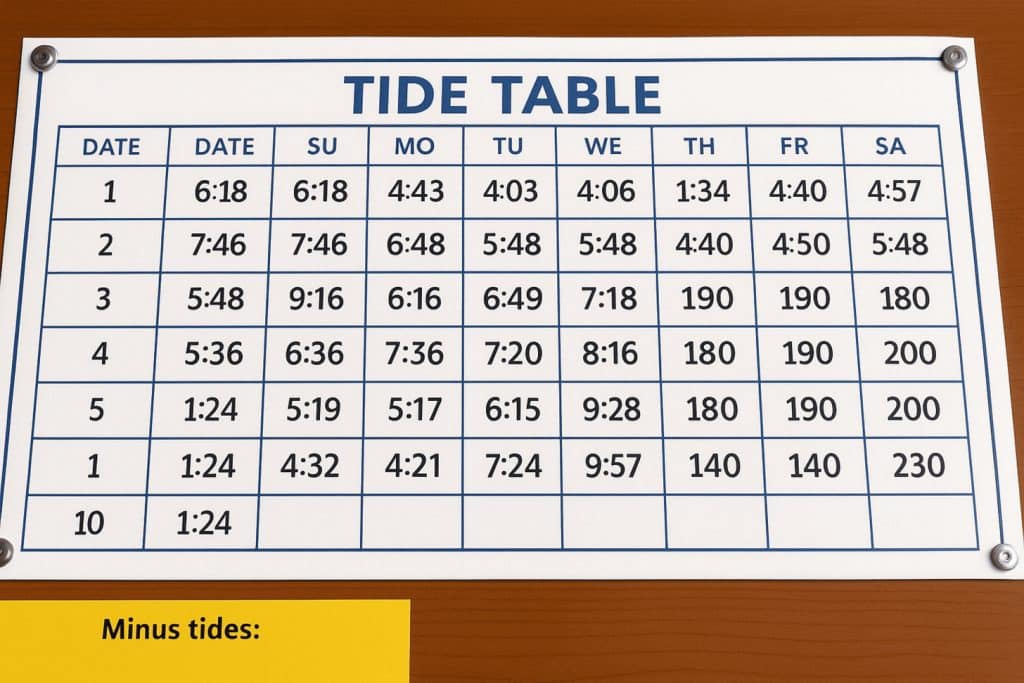
Timing is everything when it comes to tide pool exploration. The most rewarding experiences happen during low tides, particularly during “minus tides” when the water recedes further than average, revealing rarely seen areas of the intertidal zone.
What Are Minus Tides?
Tide tables list water levels in feet relative to the average lowest low tide, which is set as zero. When you see negative numbers (like -1.5 feet), this indicates a minus tide that will expose more of the intertidal zone than usual. These exceptional low tides create prime conditions for tide pool exploration, revealing marine life that might otherwise remain submerged.
Minus tides typically occur during full and new moons, when the gravitational pull of the sun and moon align. In Oregon, the most dramatic minus tides usually happen during spring and summer months, coinciding perfectly with better weather conditions for coastal exploration.
Planning Your Visit
For the best tide pooling experience, aim to arrive about 1-2 hours before the lowest point of the tide. This gives you plenty of time to explore as the water recedes and ensures you're not rushing against an incoming tide.
Pro Tip: The NOAA Tides and Currents website provides accurate predictions for specific locations along the Oregon coast. Always check the tide forecast for your specific destination, as timing can vary significantly between different beaches.
Remember that tide pools are most vibrant when they still contain water but are safely accessible. As you plan your visit, look for low tides in the -0.5 to -2.0 foot range for optimal viewing conditions.
Never Miss a Perfect Tide
Download a tide prediction app to have accurate tide information at your fingertips, even in areas with limited cell service.
Safety Considerations for Tide Pool Explorers
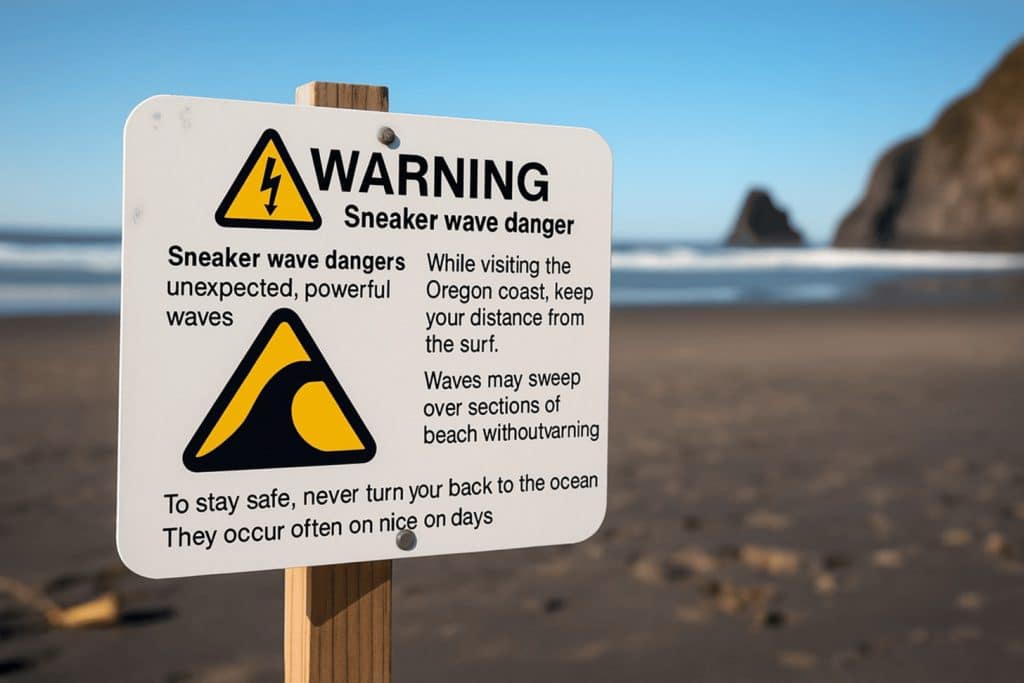
The Oregon coast's dramatic beauty comes with equally dramatic hazards. Understanding and respecting these risks ensures your tide pool adventure remains safe and enjoyable.
Sneaker Waves: The Oregon coast is notorious for unpredictable “sneaker waves” that can surge much further up the beach than preceding waves. These can appear without warning even on seemingly calm days. Never turn your back to the ocean, and always keep an escape route to higher ground in mind.
- Check weather and surf conditions before heading out. Avoid tide pooling during stormy weather or high surf advisories.
- Be aware of rising tides that can cut off access to beaches or headlands. Know when the tide will turn and leave plenty of time to return safely.
- Wear appropriate footwear with good traction to prevent slips and falls on wet, algae-covered rocks.
- Explore with a buddy whenever possible, especially in more remote locations.
- Carry a cell phone in a waterproof case, but be aware that many coastal areas have limited or no service.
Parents should keep children within arm's reach when exploring tide pools. Consider life jackets for young children, as recommended by the Oregon Parks and Recreation Department, especially when exploring during incoming tides or in areas with stronger wave action.

Seasonal Considerations for Oregon Tide Pool Exploration
Summer (June-August)
Pros: Warmest weather, most minus tides, longest daylight hours, and volunteer interpreters often present at popular sites like Haystack Rock.
Cons: Largest crowds, especially at accessible locations like Cannon Beach.
Special Features: Tufted puffins nesting at Haystack Rock, abundant juvenile fish in tide pools.
Fall (September-November)
Pros: Fewer crowds, still relatively mild weather, good minus tides in early fall.
Cons: Increasing storm activity, especially by late October.
Special Features: Migrating shorebirds, increased chance of finding storm-driven oceanic species in tide pools.
Winter (December-February)
Pros: Dramatic storm watching, virtually no crowds.
Cons: Dangerous conditions with high surf and frequent storms, fewer good low tides during daylight hours.
Special Features: Winter storms reshape tide pool habitats, creating new formations to explore during safe weather windows.
Spring (March-May)
Pros: Increasing number of good low tides, wildflowers on coastal headlands, fewer crowds than summer.
Cons: Variable weather conditions, can still be quite cool and rainy.
Special Features: Spring reproduction for many tide pool species, with new growth and activity.
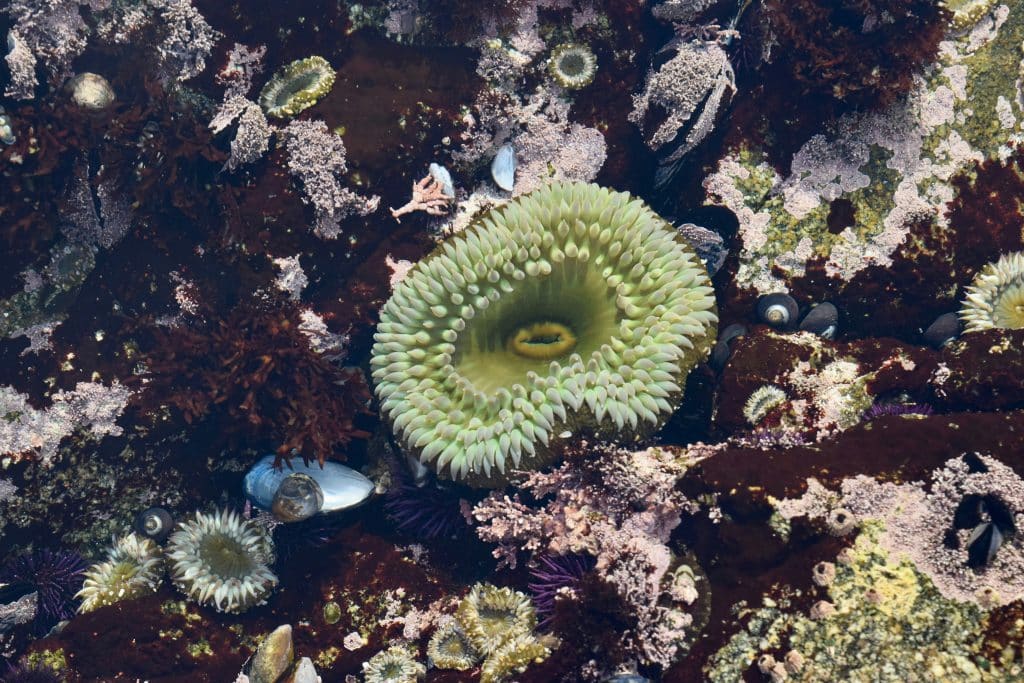
While summer offers the most reliable conditions for tide pool exploration, each season presents unique opportunities to witness different aspects of these dynamic ecosystems. Spring and fall represent excellent compromises between good conditions and smaller crowds.
Preserving Oregon's Tide Pool Legacy

Oregon's tide pools represent a precious window into marine ecosystems that most people rarely get to experience firsthand. These natural treasures allow us to witness the remarkable adaptations that enable life to thrive in one of Earth's most challenging environments—the ever-changing boundary between land and sea.
As visitors to these special places, we carry the responsibility of exploration with minimal impact. By timing our visits with the tides, treading carefully, observing respectfully, and leaving everything as we found it, we help ensure these ecosystems remain vibrant for future generations of explorers.
Whether you're marveling at the purple sea stars of Cannon Beach, discovering hermit crabs at Cape Kiwanda, or admiring the giant green anemones of Strawberry Hill, remember that you're a guest in an ancient and complex world. Your mindful presence helps write the next chapter in Oregon's ongoing tide pool story.
Share Your Tide Pool Adventures
Help raise awareness about tide pool conservation by sharing your experiences and observations responsibly on social media.
“In the end we will conserve only what we love, we will love only what we understand, and we will understand only what we are taught.”


